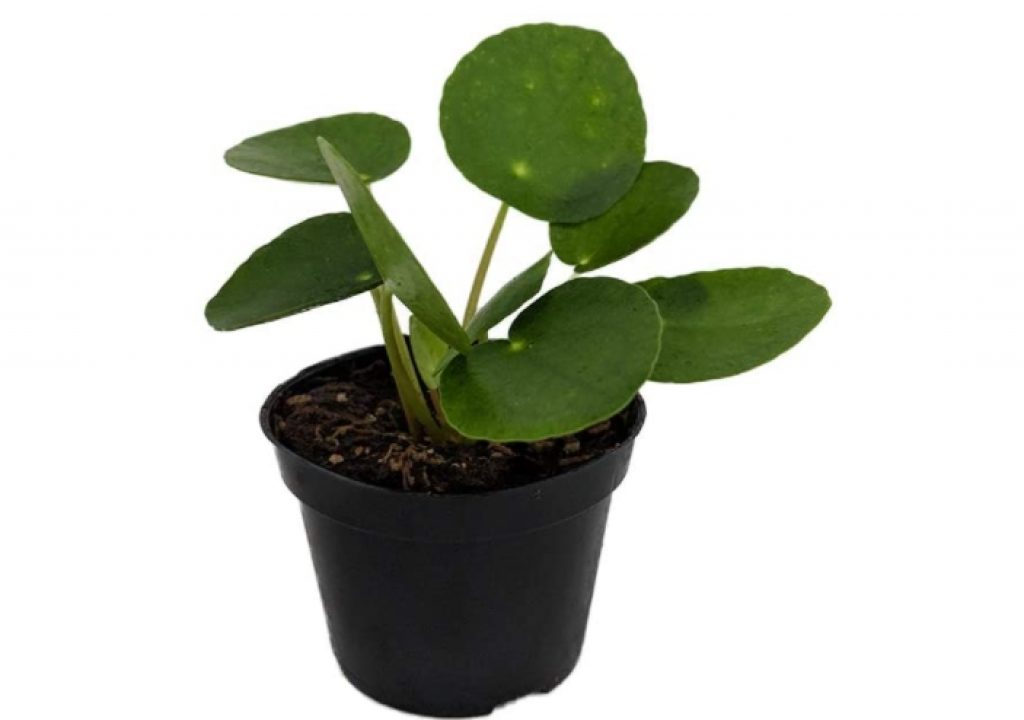The Chinese money plant is easy to propagate (done from plantlets offshoots that sprout from the trunk). It is easy to grow and care for small houseplants. Is it toxic to cats or not?
Chinese money plant (Pilea peperomioides), known by other names like missionary plant, lefse plant, pancake plant, UFO plant, mirror grass, or blender plant, is a flowering plant in the family Urticaceae (the nettle family). It is native to Sichuan and Yunnan, popularly cultivated as a houseplant.

Boasting of a Royal Horticultural Society’s Award of Garden Merit, Chinese money plant or Pilea peperomioides is safe for cats, i.e., it is not toxic or poisonous to cats as dogs making it a perfect houseplant for people who have these pets.
Money plant and money trees
We want to emphasize that money plant or money tree are names used for several plant species, some of which are toxic and shouldn’t be taken to mean Pilea peperomioides.
Some plants, often known as money plants, include the following:
Epipremnum aureum (pothos or devil’s ivy)
Epipremnum aureum in the family Araceae, whose other names include pothos, golden pothos, hunter’s robe, ivy arum, silver vine, marble queen, house plant, Solomon Island ivy, taro vine, Ceylon creeper, devil’s ivy, among others.
In most stores, it is referred to as a money plant, it resembles philodendron, but it is toxic to cats and dogs since it has insoluble oxalates. According to ASPCA, it will cause “oral irritation, pain, and swelling of mouth, tongue, and lips, excessive drooling, vomiting (not horses), difficulty swallowing.”
Hydrocotyle vulgaris or common pennyworth
Hydrocotyle vulgaris, also known as money plant, marsh pennywort, water naval, copper coin, or lucky plant, this full indoor and outdoor plant can again grow on the pond and water garden side isn’t toxic or poisonous to cats and dogs.
It belongs to the family Araliaceae and can thrive even in stagnant water up to two inches deep. However, contrary to many people’s assumptions, excessive watering will still cause root rot.
Lunaria or silver dollar
The other plants commonly known as the money plant are in the genus Lunaria and the family Brassicaceae (cabbage, crucifers, or mustard family). Typical examples are Lunaria biennis and Lunaria annua.
Other common names for Lunaria species include Chinese money, money plant, and Pope’s money. Lunaria is not toxic to cats or dogs.
Crassula ovata or Jade plant
Crassula ovata, commonly known as jade plant, money tree, money plant, Chinese rubber plant, jade tree, Japanese rubber plant, baby jade, dwarf rubber plant (don’t confuse with baby rubber plant) lucky plant among other names is a popular houseplant in the family Crassulaceae. Unfortunately, the jade plant is toxic to cats, dogs, and horses and mildly harmful to humans, including skin contact.
Common symptoms of toxicity to these pets include depression, vomiting, and incoordination. However, the reason for toxicity is unclear.
Pachira aquatica or Malabar chestnut
Another plant that bears the name money plant or tree plant is Pachira aquatica that belongs to the family Malvaceae. It has other names, including Malabar chestnut, Guiana chestnut, French peanut, Saba nut, Provision tree, Pumpo, and Monguba.
Pachira aquatica, a popular tropical ornamental plant that cannot tolerate frost, isn’t toxic to cats or dogs.
Cocoa tree
Since it was once used as a medium of exchange, you may find some text referring to Theobroma cacao, also known as the cacao tree as a money tree. The cocoa tree belongs to the family Malvaceae, and its berries have theobromine, which causes toxicity to cats and dogs.
However, it is not a popular ornamental or house plant but more of a cash crop in humid tropics
Pilea peperomioides growing tips
Now that it is safe and has charming saucer-shaped shiny dark green leaves and greenish to the dark brown stem, you may want to grow this houseplant.
If that is the case, you need to know that the Chinese money plant requires bright indirect light, moist, well-drained, moisture-retaining soil but not very soggy, average room humidity and temperatures between 13°C to 30°C but can tolerate up to 10°C.
